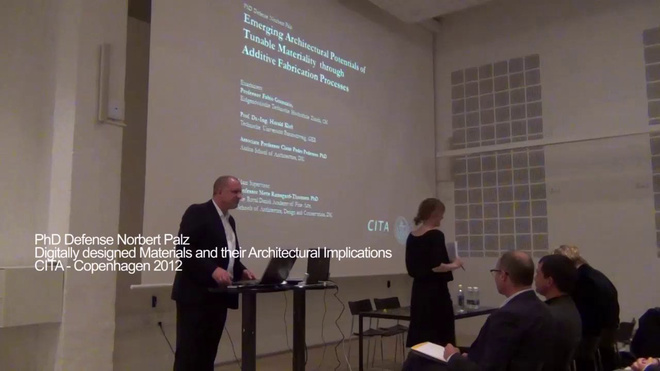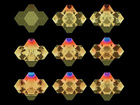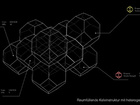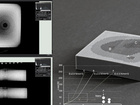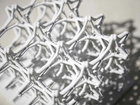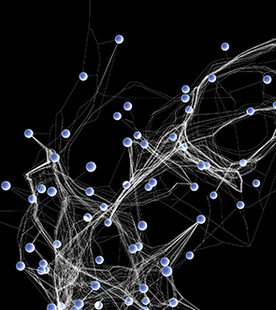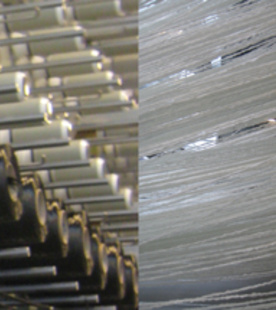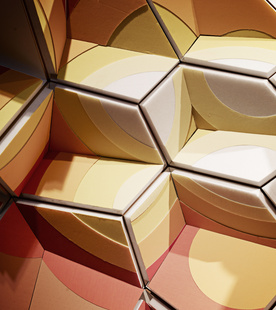Norbert Palz: Emerging Architectural Potentials of Tunable Materiality through Additive Fabrication Techniques

The research investigates innovative applications of additive fabrication technologies for the creation of a new digitally defined materiality. The thesis outlines key areas of architectural applications and examines new digital workflows and conceptual and modeling representations of an extended performative materiality.
Heterogeneous material Distribution within a Spacefilling Structure
“Additive fabrication” is a collective term for a series of manufacturing processes that allow the vertically layered materialisation of three-dimensional digital content in a broad variety of materials.
The research arguments that additive fabrication could be utilized for a local specification of geometry and material compositions of a designed object. The design process can hereby take advantage of the known benefits as accuracy, speed and achievable complexity that are inherent to the technology. The research claims that additive fabrication can develop digitally controlled structural systems of the material itself with local variations that are problematical or impossible to create with conventional manufacturing technologies.
Research Question
Can a digitally defined, fully functioning, three-dimensionally heterogeneous material species be employed for new form of complex architectural application? What are the consequences of such am altered material species for an architectural practice? What are its modes of representation?
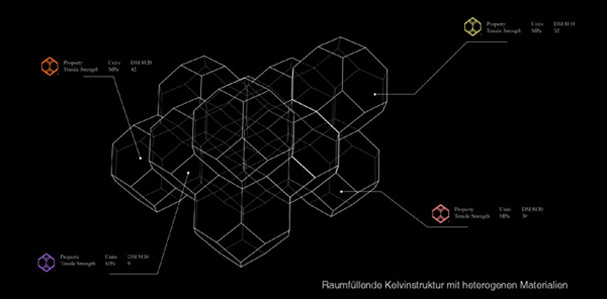
Parametric Modeling of Geometry with Auxetic Properties
The investigation expands contemporary research areas for Functional Gradient Materials (FGM) that develops linear transient compositions between material pairs. The thesis conducts physical experiments that create three-dimensionally heterogeneous materials with a graded stiffness, a locally defined dynamic performance and a structural hierarchy. The research uses different digital and analogue analysis methods as e.g. computer tomography and develops workflows with the aid of finite element analysis and topology optimisation for the creation of modelling tools that can design the structural system.
The investigation of digitally defined and additively fabricated material builds upon an existing field of interdisciplinary research that can be implemented into a new design practice and tectonic of architectural objects. These more material oriented tectonics eliminate traditional structural hierarchies that are usually based on a cascade of increasingly robust members. The division into primary, secondary and tertiary structural elements can now be traded in for a fluent accentuation of different immanent structural or functional potentials. The historical concept of a “building skin” can be closer related to the richness of expression and functionality of transient membranes and structures found in Nature and allow a different interaction between building and user.
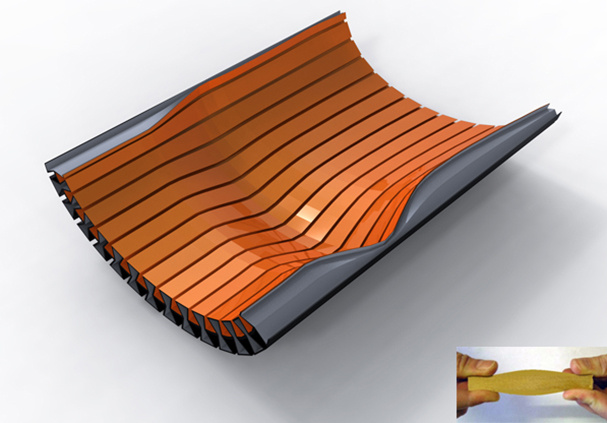
Computertomography of RP sample with graded stiffness
The power of digital calculation processes allows the creation of unpreceded architectural objects that are generically bonded with the digital design and fabrication tools. The consequences of a projected digitally defined materialisation process can be envisioned on various scales.
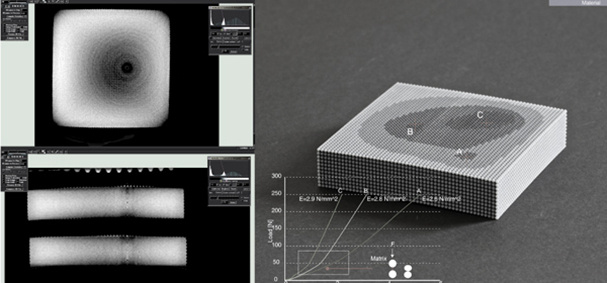
Additivly fabricated Polymer Skins with Heterogenous Properties
This computer guided materialisation process re-negotiates the relationship between architect and material in a new manner, since material can be characterized as a digitally defined, locally transient phenomenon and not as a static, homogenous element embedded in a historical building tradition. The traded interaction between material properties and derived architectural expression that can be found in traditional building materials can be expanded by a material paradigm change that is dependent on a digital and analogue interface for the calibration of its inactive and active properties and applications.


